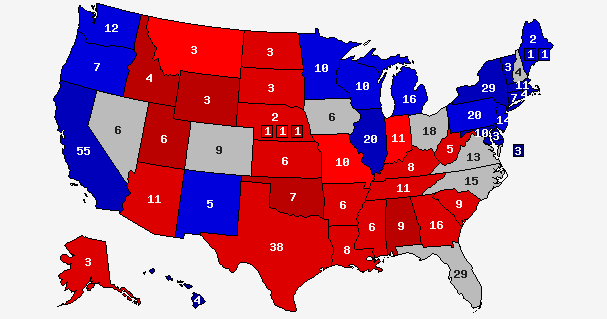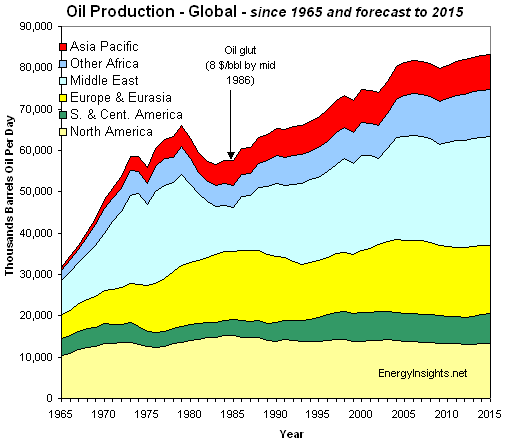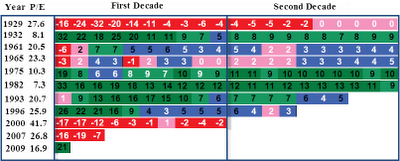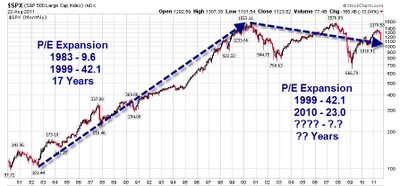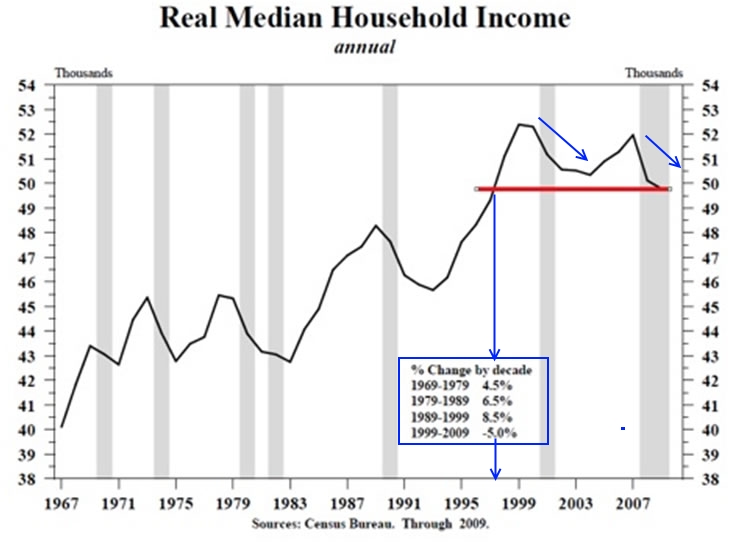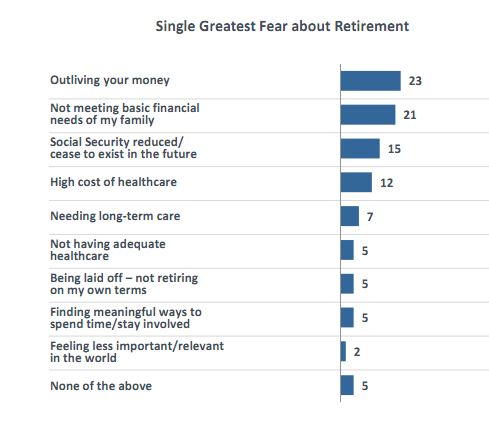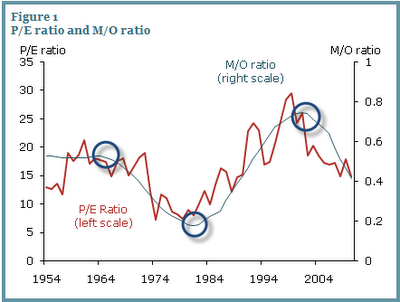Here is the story of Camden NJ. It has been under Democratic Party control for five decades. The population was 125,000 in 1950. Today the population is 77,000. The population is 50% black and 35% Puerto Rican. A full 26% of the households consist of married couples. The per capita income is $12,000. Median household income is $18,000. A full 52% of the population lives in poverty. The average home value is $35,000. The official unemployment rate is 20%.
The real question is how did the white man cause this. Surely this shithole became a shithole due to racism. It couldn’t have been the policies implemented by liberal Democrats over the last five decades. I feel tremendous guilt for causing this horrific result. Please take more of my taxes to hand over to the lazy good for nothing free shit army in Camden NJ. I know if we just give them more money Camden will surely revive itself.
City of Ruins
November 4, 2010
Camden, New Jersey, with a population of 70,390, is per capita the poorest city in the nation. It is also the most dangerous. The city’s real unemployment—hard to estimate, since many residents have been severed from the formal economy for generations—is probably 30–40 percent. The median household income is $24,600. There is a 70 percent high school dropout rate, with only 13 percent of students managing to pass the state’s proficiency exams in math. The city is planning $28 million in draconian budget cuts, with officials talking about cutting 25 percent from every department, including layoffs of nearly half the police force. The proposed slashing of the public library budget by almost two-thirds has left the viability of the library system in doubt.
Camden is where those discarded as human refuse are dumped, along with the physical refuse of postindustrial America. A sprawling sewage treatment plant on forty acres of riverfront land processes 58 million gallons of wastewater a day for Camden County. The stench of sewage lingers in the streets. There is a huge trash-burning plant that releases noxious clouds, a prison, a massive cement plant and mountains of scrap metal feeding into a giant shredder. The city is scarred with several thousand decaying abandoned row houses; the skeletal remains of windowless brick factories and gutted gas stations; overgrown vacant lots filled with garbage and old tires; neglected, weed-filled cemeteries; and boarded-up store fronts.
Corruption is rampant, with three mayors sent to prison in a little more than two decades. Five police officers, two of whom are out on bail and three of whom have pleaded guilty, have been charged with planting evidence, making false arrests and trading drugs for information from prostitutes. County prosecutor Warren Faulk has had to drop charges against some 200 suspects, including some who’d spent years in prison, because of the misconduct. The city is dominated by an old-time party boss, George Norcross III. Although he does not live in Camden, his critics contend that he decides who runs for office and who does not, who gets city and state contracts and which projects get funded. Tens of millions in state funds have been used for city projects, from an aquarium on the waterfront to a new law school to an expansion of the Cooper University Hospital and construction of a medical school. In 2002 the state approved a $175 million recovery package to save the city, but according to a yearlong investigation by the Philadelphia Inquirer, only 5 percent had been used to combat crime, improve schools, provide jobs or bolster municipal services. Those who oppose Norcross insist he has turned the poverty and despair of Camden into a business. His critics charge that the new medical school, for example, was approved because it was part of a back-room deal Governor Jon Corzine cut with Norcross in Corzine’s failed re-election bid. When I met with him, Norcross dismissed the allegations and defended his huge infrastructure projects as crucial to revitalizing the bleak downtown.
Camden, like America, was once an industrial giant. It employed some 36,000 workers in its shipyards during World War II and built some of the nation’s largest warships. It was the home to major industries, from RCA Victor to the New York Ship Building Corporation and Campbell’s Soup, which still has its international headquarters in a gated section of Camden but no longer makes soup in the city. Camden was a destination for Italian, German, Polish and Irish immigrants, who in the middle of the last century could find decent-paying jobs that required little English or education. The city’s population has fallen by more than 40 percent from its 1950 level of 120,000. There are no movie theaters or hotels. There are lots with used cars but no dealerships that sell new vehicles. The one supermarket is located on the city’s outskirts, away from the endemic street crime.
There are perhaps a hundred open-air drug markets, most run by gangs like the Bloods, the Latin Kings, Los Nietos and MS-13. Knots of young men in black leather jackets and baggy sweatshirts sell weed and crack to clients, many of whom drive in from the suburbs. The drug trade is one of the city’s few thriving businesses. A weapon, police say, is never more than a few feet away, usually stashed behind a trash can, in the grass or on a porch. Camden is awash in guns, easily purchased across the river in Pennsylvania, where gun laws are lax.
Camden is the poster child of postindustrial decay. It stands as a warning of what huge pockets of the United States could turn into as we cement into place a permanent underclass of the unemployed, slash state and federal services in a desperate bid to cut massive deficits, watch cities and states go bankrupt and struggle to adjust to a stark neofeudalism in which the working and middle classes are decimated.
* * *
I found the city’s homeless congregated in a collection of blue and gray tents, protected by tarps, set up under the shelter of a Route 676 ramp. The tent city, or “Transitional Park,” was overseen by Lorenzo “Jamaica” Banks, 57, who bought damaged tents from Wal-Mart and Kmart at a reduced price, repaired them and provided them to the homeless—at $10 a pop, police told me. Banks insisted he offered them for free.
When I walked into the encampment with my colleague, comics artist Joe Sacco, Banks was chopping firewood. A man with receding black hair and a beard, Banks was dressed in carpenter’s jeans and a plaid shirt over a gray hooded sweatshirt. There were about fifty tents in the park, and Banks owned forty of them. He spoke in the drumbeat staccato of a man who seems about to snap at any moment. He claimed to be a Vietnam vet, to have been a heroin addict now “clean for thirty-seven years,” to have ended up after the war in a mental institution, to have jumped off the Ben Franklin Bridge in a suicide attempt because of “a lot of flashbacks” and to have spent “twenty-two years, six months, three hours and thirty-three seconds” in prison for shooting to death his best friend because he was “killing his baby in front of me.”
“I’m better now,” he assured us as the commuter train into Philadelphia rumbled along the tracks overhead. “I’m on medication. I live here because it reminds me of the jungle.”
Banks, who called himself “the mayor,” ran the tent city, which had a population of about sixty, ranging in age from 18 to 76, like a military encampment. He had a second-in-command, his “CEO,” who took over when Banks had to buy supplies. There were weekly tent inspections on Saturday, weekly meetings every Tuesday night and a list of sixteen rules written on plywood tacked to a tree. These included restrictions on fighting and arguing, admonishments to clean up the trash, an order not to sell food stamps and several other blunt prohibitions, including: “Don’t bring your tricks here” and “No borrowing money or sex from anyone.” Residents received two warnings for infractions before they were evicted. Drugs were banned. Alcohol was not. Banks had even set up a bank account for the enclave. At night there were shifts when someone—Banks said he preferred a vet—had to stand guard. There was a Dumpster filled with trash at the edge of the encampment, white folding tables with white plastic chairs and five-gallon plastic water containers outside many tents. Firewood lay scattered about the site.
“Take a look at the American Dream,” Banks said as he guided us through the tents, stepping around rusted bicycles and shopping carts. “In today’s society no one is exempt from Transitional Park. Everybody is one paycheck away from being here.”
Officially, Camden has 775 homeless, but there are only 220 beds in the county, so city officials nervously tolerated the encampment, despite its illegality, until late spring, when they swiftly dismantled it. Those tossed out scattered, and about a half-dozen migrated to live in squalor under the concrete ramps of Route 676, where it runs across the river into Philadelphia.
Camden’s streets are filled with the unemployed. Ali Sloan El, who recently got out of prison, is chatting with some men in the street, several of whom are Muslims like him and have shaved heads and long black beards. The group of men around Sloan El have just witnessed a botched robbery at a barbershop a few minutes before Joe and I arrive. A young gunman, nervous and unsure of himself, had pulled out a pistol and tried to rob the barbers. He was chased out of the shop by a group of men and tackled on the sidewalk. One of the barbers is at the police station filing a report.
The mood inside the shop is hostile. “How did you know about the stickup?” asks a barber who says his name is Sam. “We were told about it on the street,” I answer. He arches his eyebrows in disbelief. “No one would talk to you on the street. No one would tell you nothin’,” he says coldly. “A mother with a 2-year-old in a stroller told us,” I tell him. “Yeah,” he admitted reluctantly, “maybe that’s right, maybe a mother would talk.”
The rumor on the street, Sloan El informs us, is that the robber was high on a narcotic called wet. The drug of choice of Camden’s criminal class, wet is made by soaking marijuana in embalming fluid, which is a mixture of formaldehyde, methanol, ethanol and other solvents. Phencyclidine, or PCP, known on the street as angel dust, is often added to the mix. Wet is smoked dry but the leaves, which glisten, give the drug its liquid name. Wet numbs its users and endows them with what seems to them like superhuman strength. Their body temperatures rise, their blood pressure drops and they frequently hallucinate. The high can last up to six hours. Two Camden police officers who do not want to be named tell us they fear confronting street thugs on wet. “You shoot them and they just keep coming,” one says warily.
Those who do not join street gangs live like minnows, darting through the currents to avoid the predatory fish. Darnell Monroe, 33, wearing a new pair of brown Timberlands, a black leather jacket, jeans and a black-and-white checked kaffiyeh as a scarf, sits with us in the barbershop. One of the barbers immediately turns up the radio to a deafening roar, I suspect to drive us out. Monroe, also a Muslim, is a tall man with a shaved head and a full black beard. He spent four years in prison for dealing drugs. He became a father when he was 13. The mother was 16. “I’m sociable,” he says when I ask him about surviving in Camden, “but I keep moving. I don’t want to draw the wrong kind of attention. I don’t want a conflict.”
Monroe was shot three times in the stomach in 1998, when he was coming out of a bar and tried to break up a fight. “To this day I don’t know who shot me,” he says. He awoke in the hospital twelve weeks later. His kidney, liver and upper and lower intestine had been badly damaged. He lifts his shirt and exposes a massive scar on his stomach that looks like a brownish mountain range with jagged edges. “It was a .380 automatic,” he says. Until he was laid off last year, Monroe had a job as a forklift operator in the scrap yards by the port. On the back of his right hand is a tattoo of a padlock with his current wife’s initials, EGK, and under his left eye is a tattooed teardrop he got in jail, in 1993, when his sister died.
The city is busily cannibalizing itself in a desperate bid to generate revenue. Giant scrap piles rise in hulks along the banks of the Delaware. The piles, filled with discarded appliances, rusted filing cabinets, twisted pipes, old turbines and corrugated sheet metal, are as high as a three- or four-story house, and at their base are large pools of brackish water. A crane, outfitted with a large magnet, sways over the pile and swings scrap over to a shredding machine. A pickup and a U-Haul filled with old refrigerators, gates, screen doors and pipes are unloading in front of a small booth when we arrive. There are about twenty scrap merchants in the city, and they have created a market for the metal guts of apartments and houses. As soon as a house is empty—even if only for a few days between renters or because it is being painted—the hustlers break in and strip every pipe, radiator, screen door and window. Over the past three or four decades thousands of owners, faced with the destruction, have walked away from their properties. Camden produces a million tons of scrap a year. Its huge shredding machines in the port can chop up automobiles and stoves into chunks the size of a baseball. Ships from Turkey, China and India pull into the port and take the scrap back to smelters in their countries.
The only white people visible daily on the city’s streets are the hookers. Congregated near the highway ramps on Ferry Street, most are heroin addicts and nearly all are infected with AIDS, hepatitis C or other sexually transmitted diseases. The women sleep in abandoned apartments without running water, heat or electricity.
If arresting someone on wet is the least pleasant duty for Camden police, arresting hookers is the second. “Ninety-nine percent of them are heroin addicts,” a sergeant tells us. “I try not to deal with them. They have diseases. You pat them down and you find needles. You can get stuck with a needle. And they have MRSA, a skin disease with open sores. We have to get our cars disinfected afterward. Ninety-five percent have outstanding warrants, although they usually give us a wrong name.”
* * *
Despite Camden’s bleakness, despite its crime and its deprivation, despite the lost factory jobs that are never coming back—despite all this, valiant souls somehow rise up in magnificent defiance. In a room across the street from Sacred Heart Catholic Church, where meals are provided for the homeless on Saturdays, a group of African-American women bow their heads over a table and hold hands. They are led by Lallois Davis, 67, a heavyset woman who radiates an indomitable, unbroken spirit.
“The poor have to help the poor,” Davis says, “because the ones who make the money are helping the people with money.”
Davis raised four children and then, when a neighbor died, leaving behind her two orphaned grandsons, Davis took them in and raised them as well. She wears a large cross around her neck. She is known as Aunt Lallois.
“My heart is heavy,” says a 69-year-old woman named Brenda Hayes, her head bowed and her eyes shut. “There is so much heaviness. It is wounding me. How can I not worry?”
“Yes, Jesus. Yes, Jesus,” the other women respond.
“I know you didn’t carry us this far to drop us now,” she says. “I know there is no burden so heavy that we can’t carry it with your help. I thank you, Lord, for friends who have carried me through the roughest times.”
“Yes, Jesus. Nothing is impossible with you, Jesus,” the women say.
“Bodies,” Hayes says after the prayer. “Bodies out back. Bodies upstairs. People stabbed. I don’t go out at night. The last one was twenty feet away from me on my floor. There was one kid, he lived in the back of the projects, 18 years old. They buried him two months ago. Gunshot. There were four kids I knew murdered, one in the parking lot who was killed last year. He was 12 or 13. He was sleeping—some say he was living—in a car.”
“There are parents who are addicts who send their children out to sell drugs,” Hayes adds. “I know a mother who is a prostitute. Her oldest daughter sells weed to go to school, and one day the mother stole the weed and sold it to buy crack.”
Father Michael Doyle, an Irish priest, has been in the Sacred Heart parish for thirty-five years. He has witnessed the violence of poverty devastating his congregation. Father Doyle was a member of the Camden 28, a group of left-wing Catholics and anti–Vietnam War activists who in 1971 raided the city’s draft board to destroy files. He was sent to Camden as punishment by church leaders who disapproved of his activism.
“Today’s a very hard time to be poor,” says Father Doyle, seated in the church rectory. “Because you know you’re poor. You hear people my age get up and say, ‘We were poor. We put cardboard in our shoes.’ We talk like that. But we didn’t know we were poor. Today you do. And how do you know you’re poor? Your television shows you that you’re poor. So it’s very easy to build up anger in a, say, a high-voltage kid of 17. He knows he’s poor, he looks at the TV and all these people have everything and I have nothing. And so he’s very angry…. I’m talking about the violence that rises out of the marketing that shows the kid what he could have, creates a huge anger that explodes easily. That I discovered very quickly when I came to Camden. I discovered the anger was so near the surface, you just rub it and it explodes. And there’s no respect for you if you have no money.”
I ask him why the rage is invariably self-destructive. “They can’t get at it,” he said. “You have an enemy, and that enemy is greed and prejudice and injustice and all that type of thing, but you can’t get at it. There’s no head, there’s no clarity, so you take it out on your neighbor. It’s just horrendous what people do.”
“Women have some dignity in a poor ghetto because they bear children and raise them,” Father Doyle goes on. “Men are adding nothing and feeding from the trough. A woman walks down the street pushing a little cart, and a child on it—she’s somebody. But the man standing watching her is nobody.”
It is a bleak, rainy afternoon when we visit Harleigh Cemetery. Walt Whitman’s tomb, based on a design drawn by William Blake, is here with its heavy stone front and peaked roof with the poet’s name in imposing stone letters. So is the grave of another Camden poet, Nicholas Virgilio, who, as Father Doyle says, “mined beauty out of the gutters of Camden.” Virgilio died of a heart attack in 1989. The priest designed his grave in the shape of a podium. One of the poet’s verses is engraved on the stone:
lily:
out of the water…
out of itself.
Virgilio, who wrote his poems in his basement under a naked light bulb next to his washing machine, chronicled the slow strangulation of his city. The hookers knitting baby booties on a bus; sitting alone as he orders eggs and toast in an undertone on Thanksgiving; latchkey children “exploring the wild on public television”; the frozen body of a drunk found on a winter morning in a cardboard box labeled “Fragile: Do Not Crush”; as well as laments for his brother Larry, killed in Vietnam. I open his thin book, Selected Haiku, to a passage and place it on the marble top of his grave. Droplets of rain splatter the page:
the sack of kittens
sinking in the icy creek
increases the cold
















